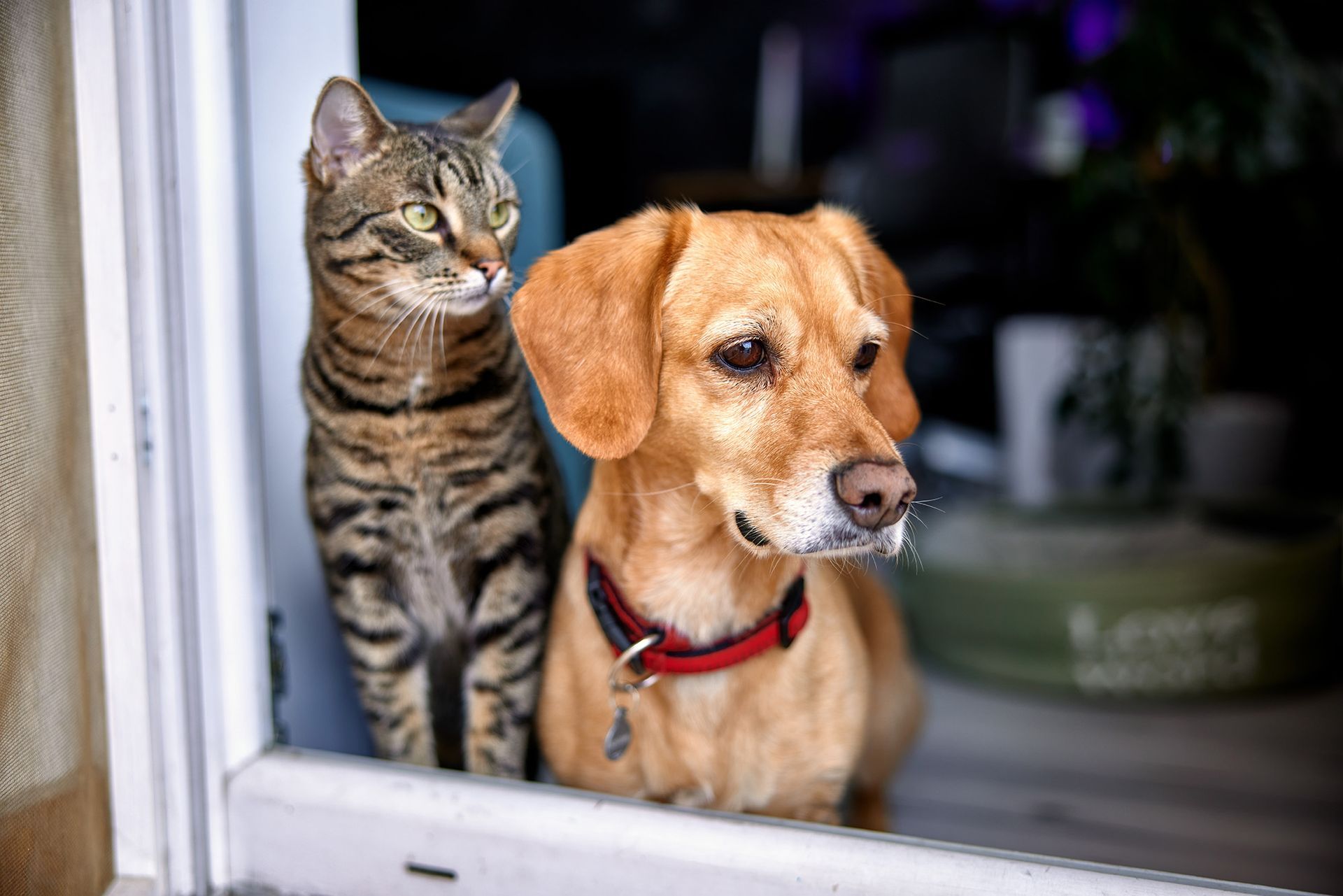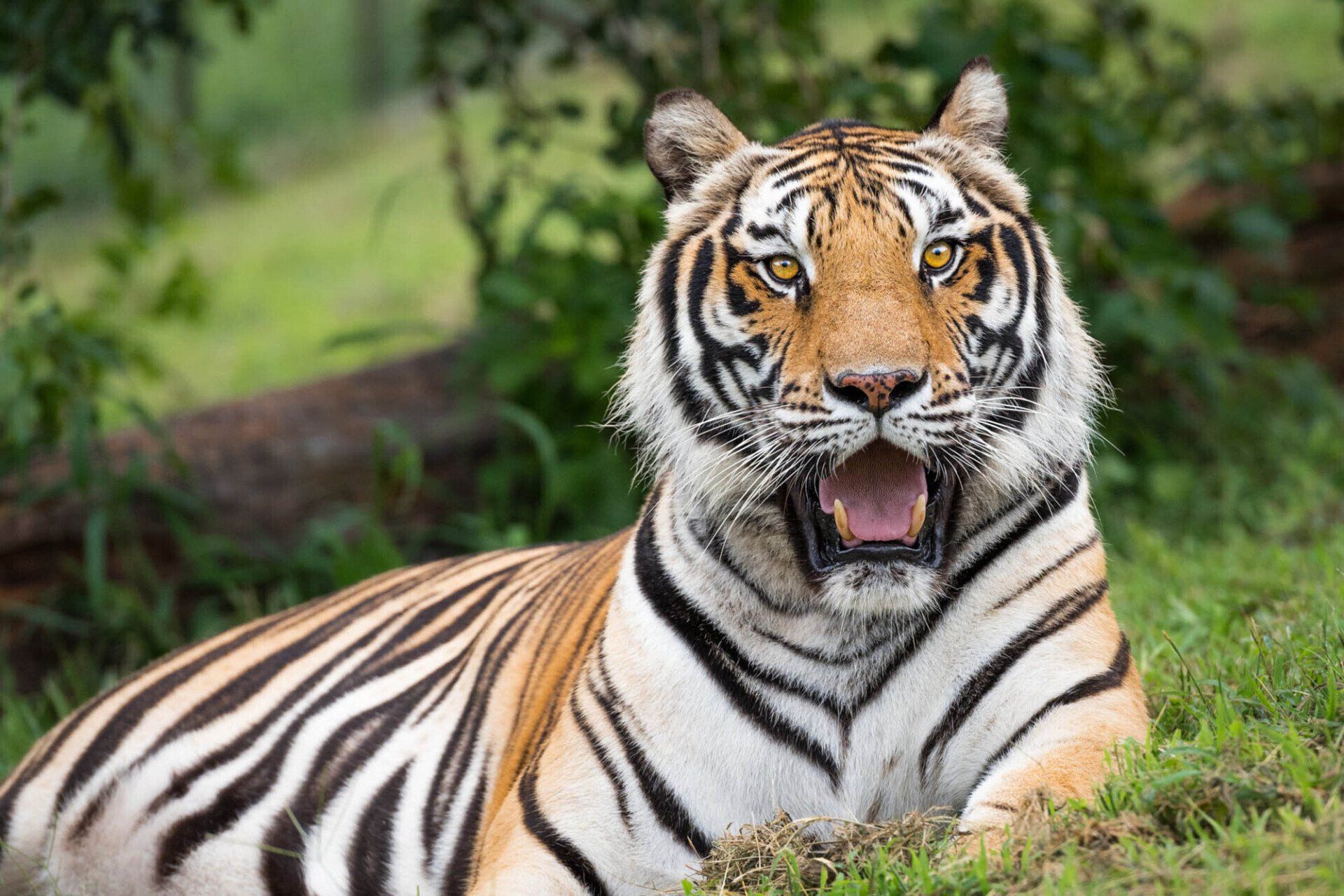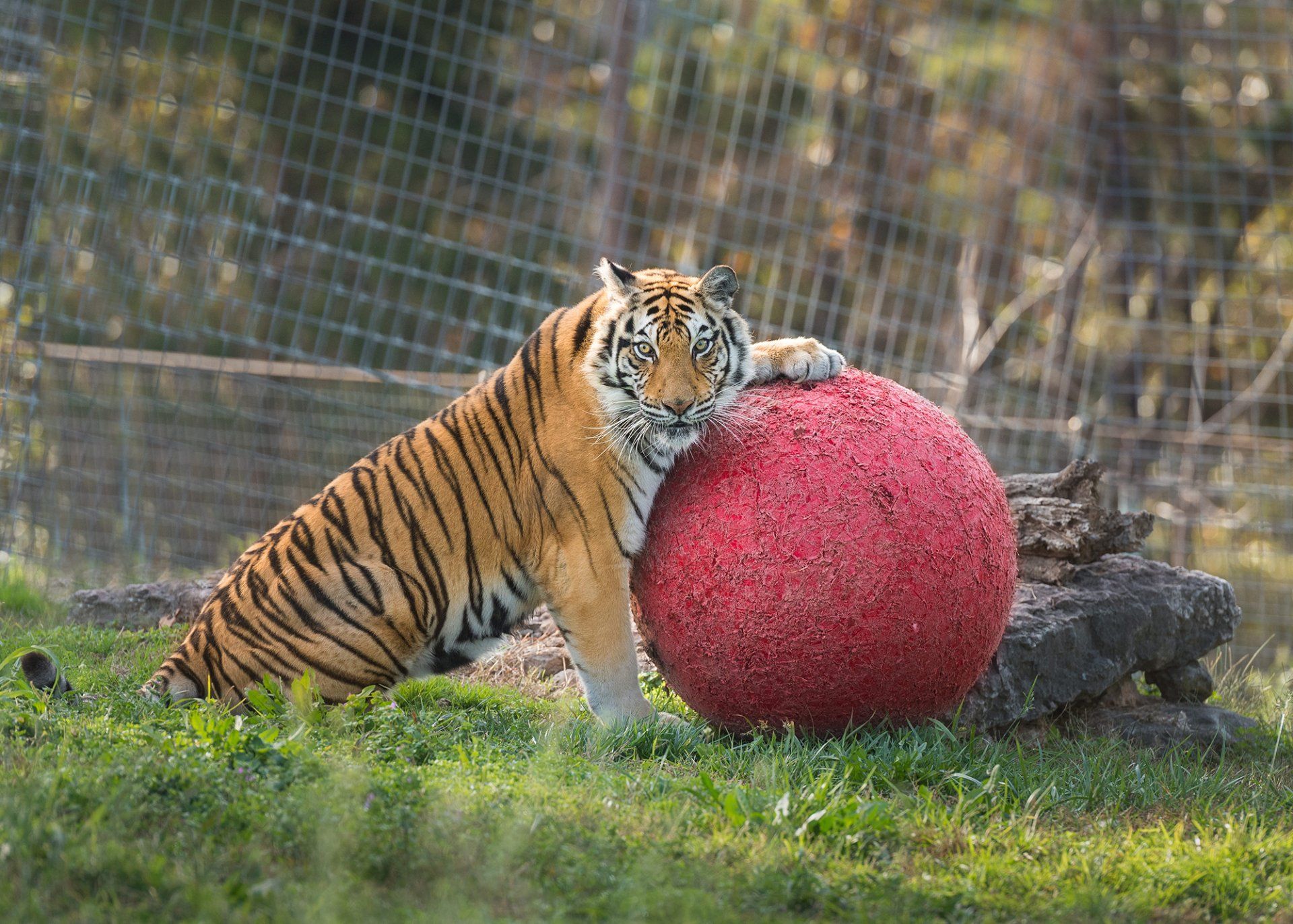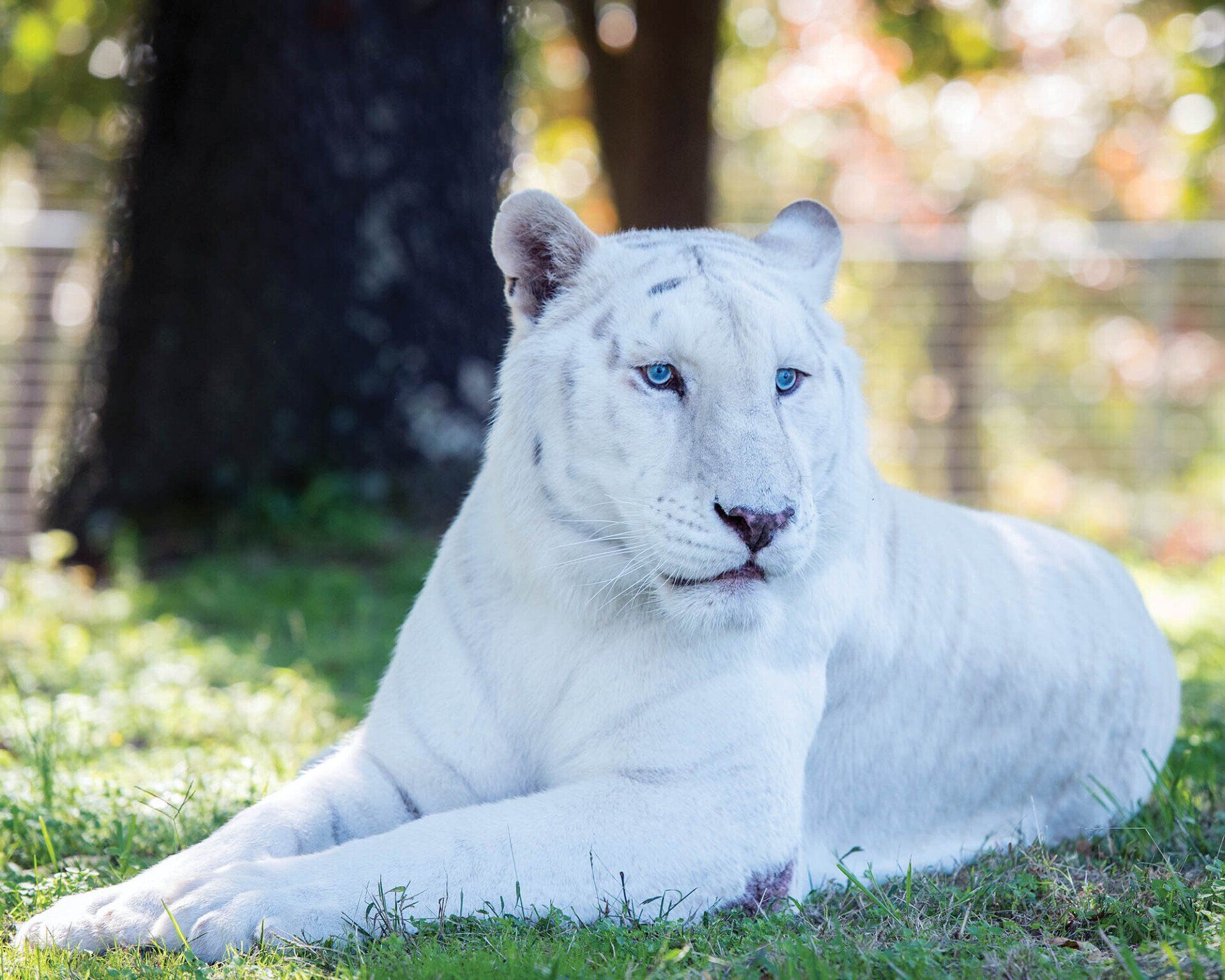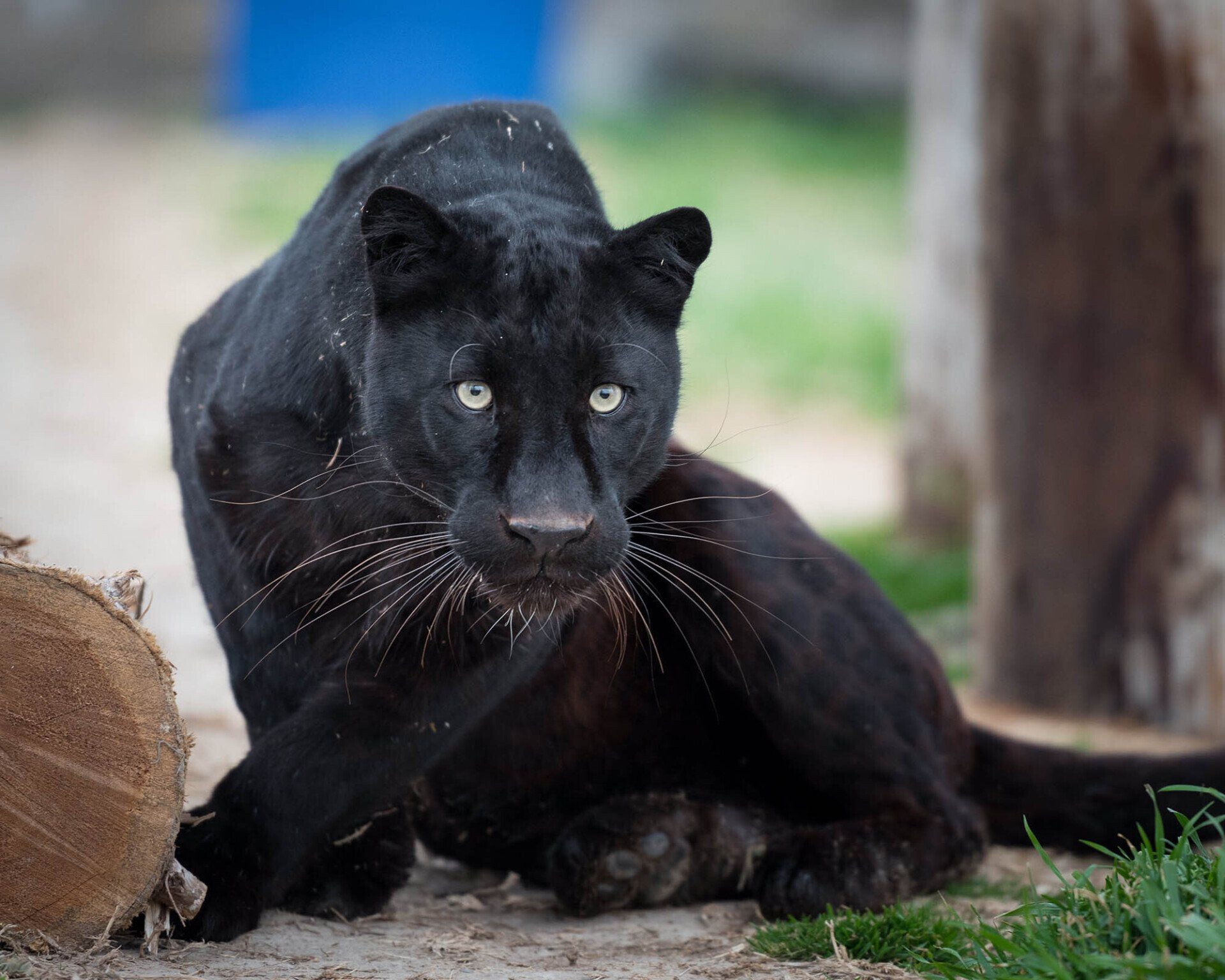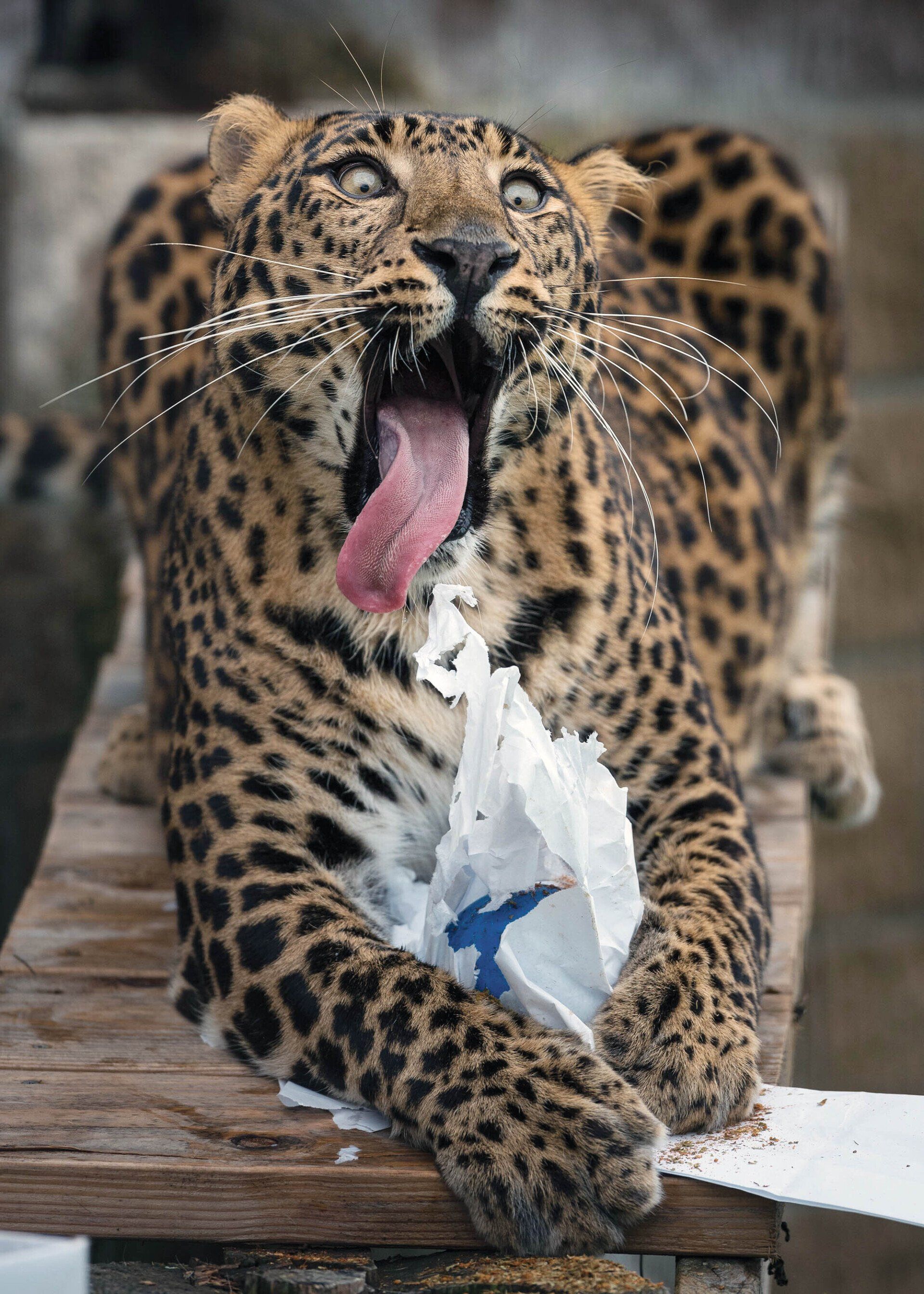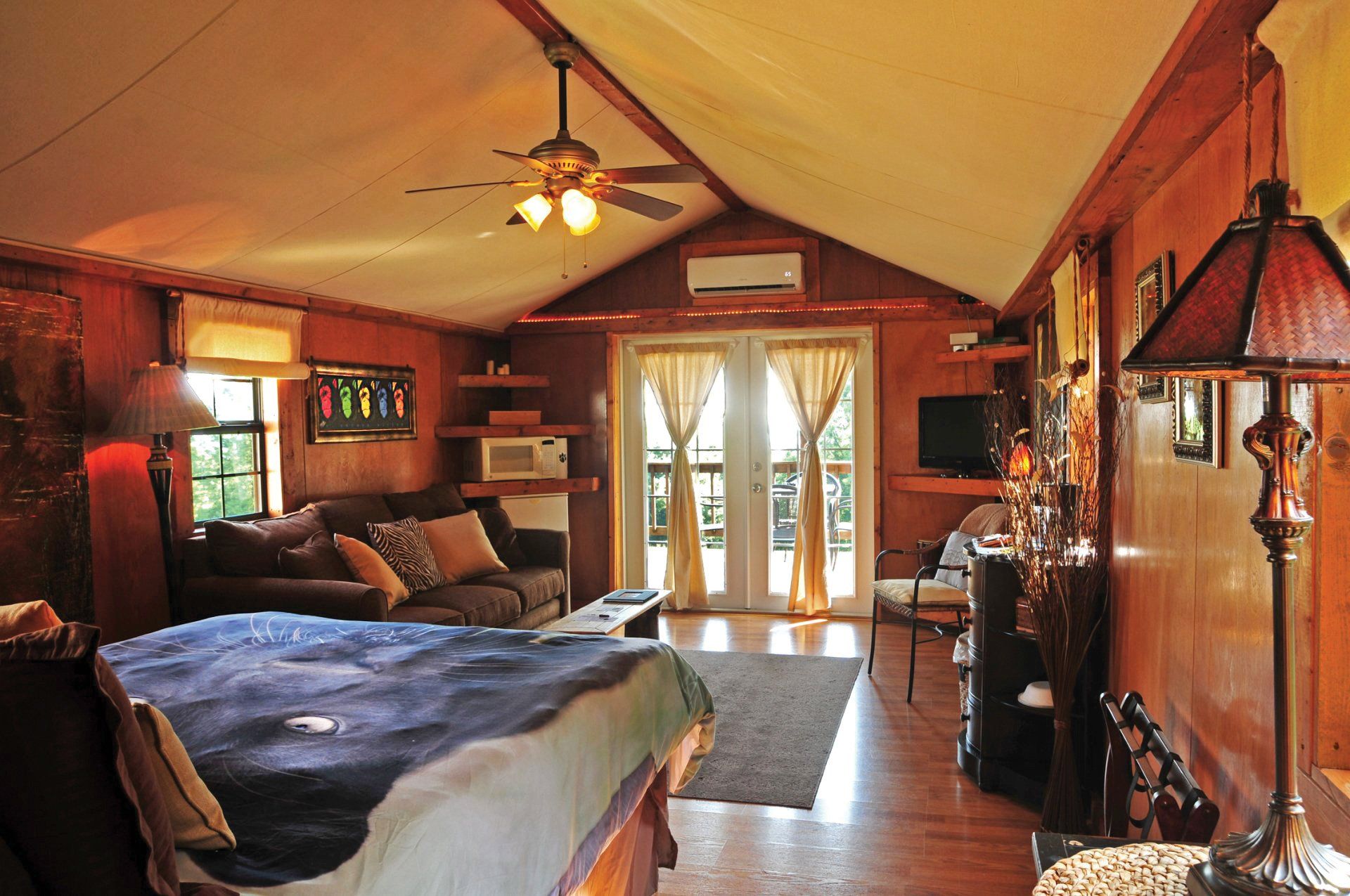Real Wild, Real Close, Real Fun
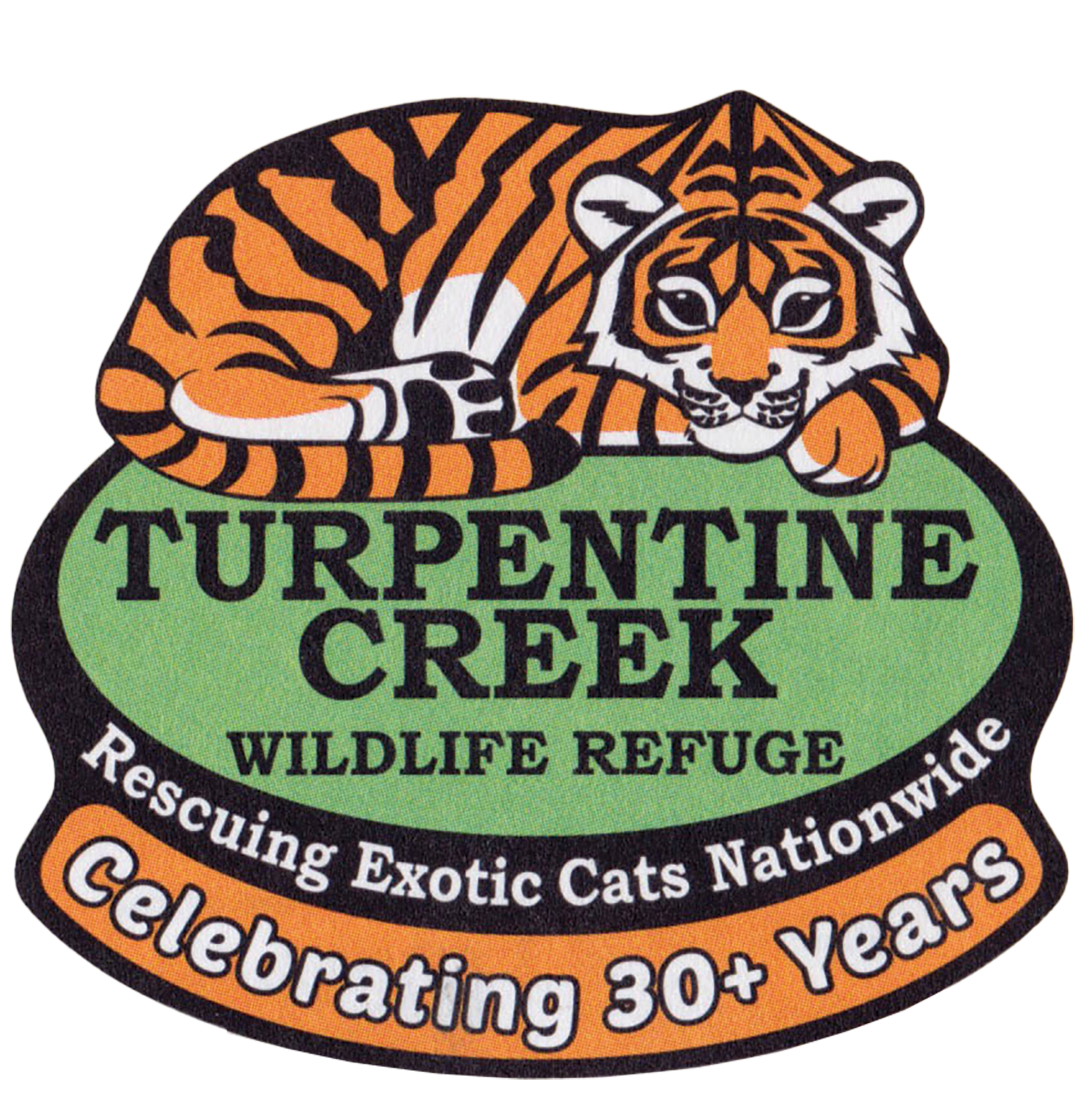
Story by Murrary Bishoff
Photos provided courtesy
Chuff
Lions, tigers and bears...
you know the rest.
Whitney
In the world of people, these big beautiful animals don't fit in and often become victims in the cub petting industry, where babies are passed around and handled by hundreds of people. Once the babies become injured, or too big, they may become a liability.
Take the case of Don Jackson, who pulled into a motel in Little Rock, Arkansas, in 1992, where he found a lion cub chained to a cinder block outside. Jackson traded motorcycles and stuff with the owner and managed to take the cub back home. He and his wife Cheryl soon found others contacting them from within the exotic animal business, seeking alternatives for their one-time “pets.” Then a woman drove up in a trailer in, hauling 42 lions and tigers, seeking help.
Jackson, having no more room for a such a menagerie, subsequently founded the Turpentine Creek Wildlife Refuge and Foundation, a 501(c)3 not-for-profit organization, taking out a lease to purchase 459 acres south of Eureka Springs, Ark. Thus a permanent home opened, a safe haven for any big cat in trouble. The foundation actively works with federal authorities regulating how exotic animals are kept and treated. Animals rescued from facilities such as the notorious Tiger King in Oklahoma come to Turpentine Creek for their forever homes. No animals are bought, sold, bred or loaned to other facilities.
Today Turpentine Creek hosts 84 different animals, including bobcats, cougars, Bengal and Siberian tigers. The foundation does not seek to replicate zoo conditions, but move closer to natural spaces with tall grass. Animals have their own spacious enclosures, many on hillsides, living in pairs from past associations or family groups. Some who prefer less contact, or who grow testy with a sibling, can live more separately, sharing a more open space every other day. Smaller cats, such as Lexi, an African Serval, which has the leaping ability to pull birds out of the air, live in spaces covered with fencing. Cats eager to stretch and dash live next to an enclosed runway where they can take a daily zoomie run if needed. Some live on Rescue Ridge, a more open, flatter area that better serves older animals or cats that have been declawed and develop arthritis.
Thurston
Check out Turpentine Creek's map of the grounds with options for all walks of life.
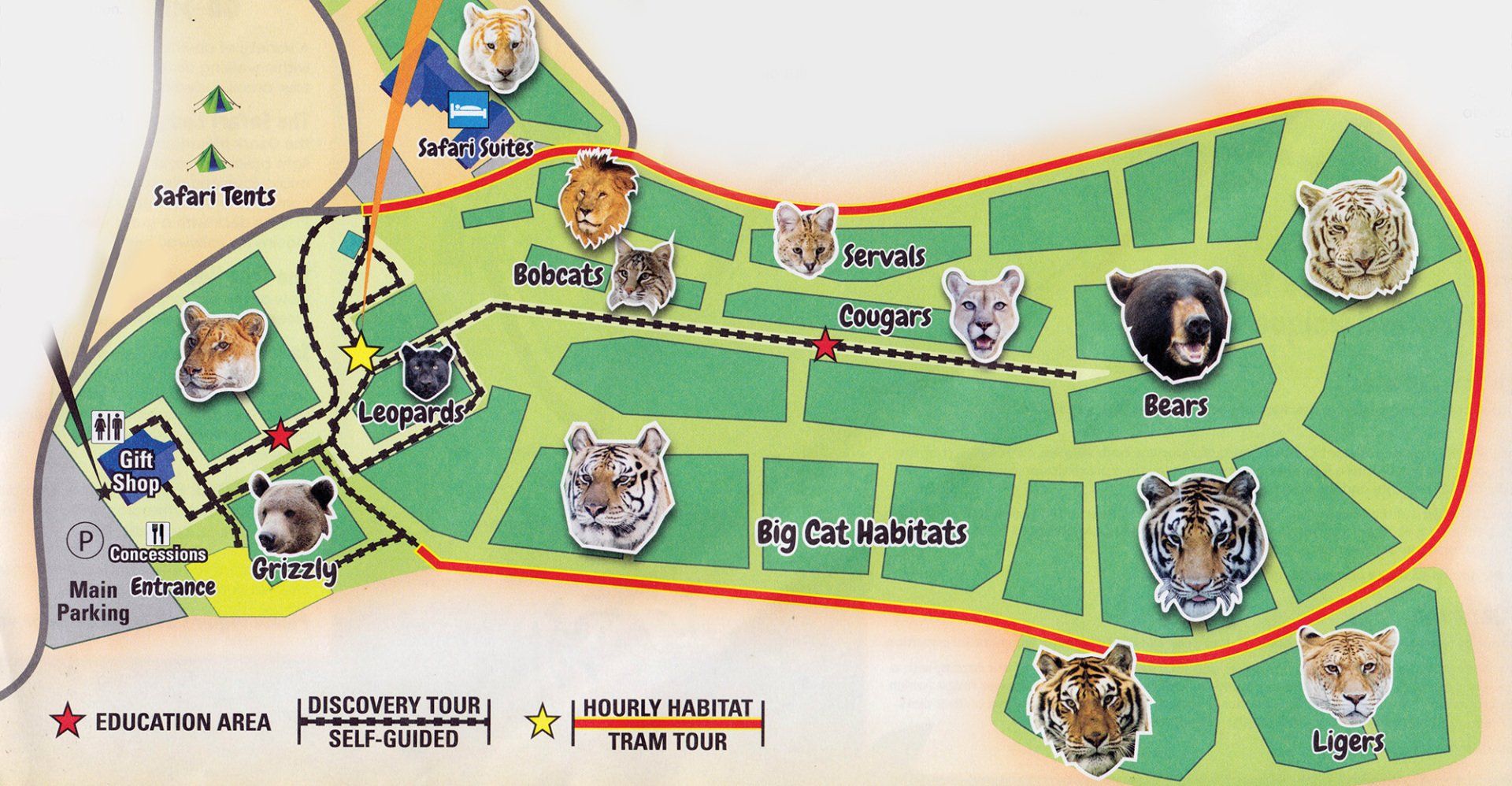
BamBam
Tsavo
Staff do not handle the animals, respecting their space and wild nature. Dinner is provided on a platter and placed inside the enclosures. As a video playing near the entrance explains, “[the animals] are predators, not pets.”
Being around people has leavened the atmosphere for the animals, taking away the competition fear, but staff nonetheless remain very respectful, only entering enclosures in pairs and double checking every lock. Each enclosure has a concrete “night house,” where the animals can go for rest or repose, away from prying eyes.
According to Turpentine Creek spokesperson Cheryl King, all the animals have names. Staff share their stories for visitors. She spoke greeted one tiger, who “chuffed” a friendly response, as the biggest cats don't purr. Bam Bam, a grizzly bear, one of three bears at the facility, enjoys entertaining and often puts on a show playing in his water area.
Staff provide toys for the animals, like large balls, or even boxes they can demolish. King said smell stimulation is a special treat for cats. Turpentine Creek accepts donations of spices and leftover perfume, especially the cats' favorites, Opium and Obsession. The public can “order” a big box for a cat and receive a video or a special visit to see the cat shred the gift.
Many animals at the facility came with issues, King said. Bam Bam, for example, had been fed dog food while younger. Lacking needed nutrition at the critical age, he grew to only the size of an adult female. Robbie, a privately owned tiger, arrived very overweight – around 700 pounds instead of 500 – from the wrong diet. He received extra exercise in his hilly enclosure and in time came down to a normal size.
Staff introduced a 15-year-old male lion to a six-year-old female, only to find she wanted to play all the time, and he really preferred resting. Staff decided to limit their time together. Also, the female went on birth control. Male lions, King explained, need their testosterone to keep their mane, otherwise their hair falls out and they become quite discouraged and depressed.
One of the facility's big success stories came from Priscilla, a momma tiger who arrived pregnant from the Tiger King. When born, the three cubs could not walk properly. Their feet turned inward, a condition known as clubfoot, resulting in the babies dragging themselves along. No known treatment for animals addresses this, so the facility's vet, Dr. Kellyn Sweeney, studied human therapy and developed a new strategy. For months, despite great protests by the cubs, staff gave the babies warm water therapy to loosen the ligaments, vigorous massaging and then leg splints. After the critical period, keeping the option of euthanasia open if it failed, all three could walk and are living normal lives with their mother at Turpentine Creek.
“That's what we're all about,” King said.
White tigers, a rarity in the wild, accounting for 1 in 10,000 natural births, make up a large number of Turpentine Creek residents. Tigers generally hunt deer, which are color blind, seeing orange as green. White tigers have no camouflage, and have been bred in captivity for their looks. Likewise, Turpentine Creek has a number of ligers and tigons, crossbred artificially between lions and tigers, something that would never happen in the wild, but happens all too often in the exotic animal trade.
Turpentine Creek relies on public support. Individual sponsors and corporate support, especially from
Tyson Foods, which helps provide protein for the Big Cats, help the foundation run the facility. Tour hours are from 9 a.m. to 4 p.m. daily. Visitors receive a map and a tram ride around the grounds to see many of the animals in their more natural settings. There is no public feeding time. King said many of the animals are more active around opening time.
Guests also have the option of three different overnight facilities, from a tent or a tree house for those who like camping, to a lodge with space for families. A small RV park is also available. Details are at the reserve's website: www.turpentinecreek.org.
Initially the reserve had to contract veterinary services from a nearby town. Veterinarian Dr. Kellyn Sweeney, originally one of the interns serving at Turpentine Creek, finished vet school and returned to open an in-house veterinary hospital.
Eureka Springs Elementary second grade class enjoys a tour of the refuge.

Spyke
Selbit
According to King, the vision of Turpentine Creek, which is accredited by the Global Federation of Animal Sanctuaries, is public education. Staff encourage visitors to promote federal legislation, now pending in the U.S. Senate, that would ban private ownership of exotic animals, something still allowed in five states. Public support also enables the reserve to care for its animals over a lifetime, as well as help in rescues when they occur.
Preserving such animals can still challenge the best staff. King reported the Lincoln, Nebraska, zoo lost all its snow leopards to COVID during the pandemic. One of the enclosures at Turpentine Creek has plastic shields around it to slow spread of the virus. Staff includes seven biologists/zoologists, and up to 18 college and university graduates serving as interns.
Turpentine Creek publishes a quarterly magazine, “Big Cat Chronicles,” with feature stories on the animals, notes from Curator Emily McCormack and news on new efforts. The facility also has an indoor museum and gift shop for more education and memento shopping.
Visitors should plan on spending at least two hours at Turpentine Creek, visiting the enclosures on a guided walking tour and taking the tram tour, which runs about 50 minutes, leaving on the hour. Tickets are $32 for adults, $20 for teens, $15 for senior citizens and children 4 to 12, free to children under 3. A personal behind-the-scenes carnivore caravan tour is also available for $250 per person. Reservations and advance bookings are encouraged. Animal adoption and sponsorships are also available.
“Help us, help them,” is a slogan on the signs seen as visitors leave. It's a promise and a pledge taken seriously at Turpentine Creek, like the commitment to giving a memorable experience. Eye contact with a cat much bigger than you guarantees that.
As Dorothy said, “Oh my.”
Congo Safari Lodge at Turpentine Creek Wildlife Refuge in Eureka Springs, Ark.
Connect with the cause:


